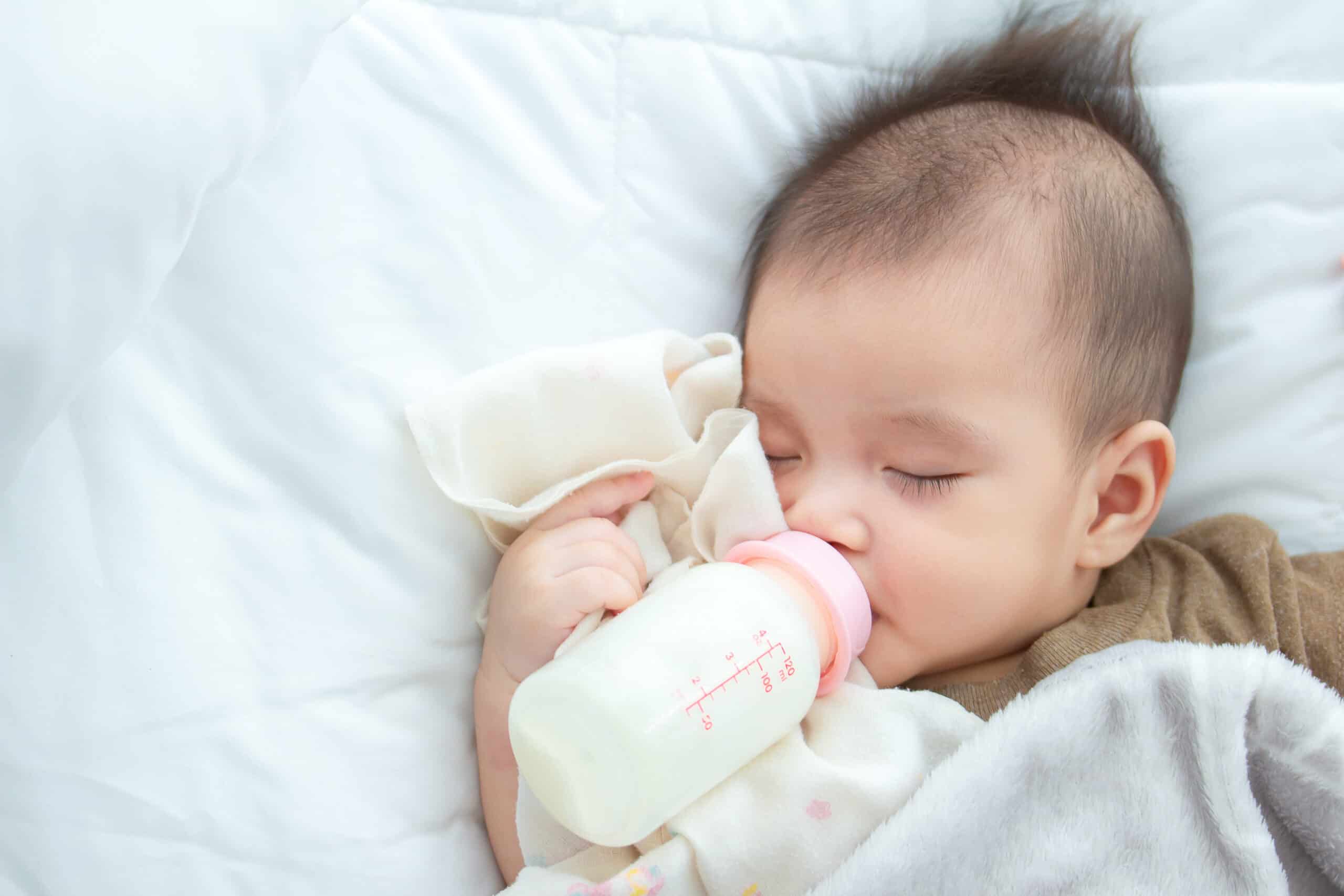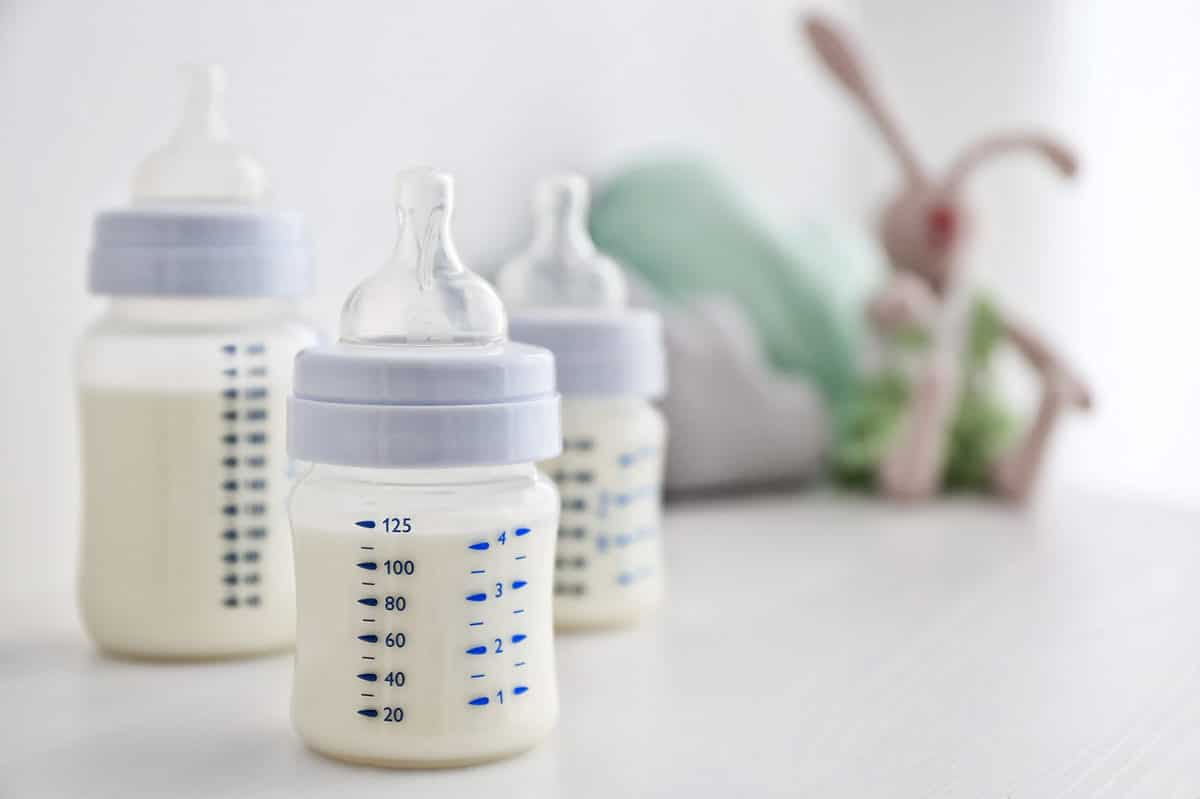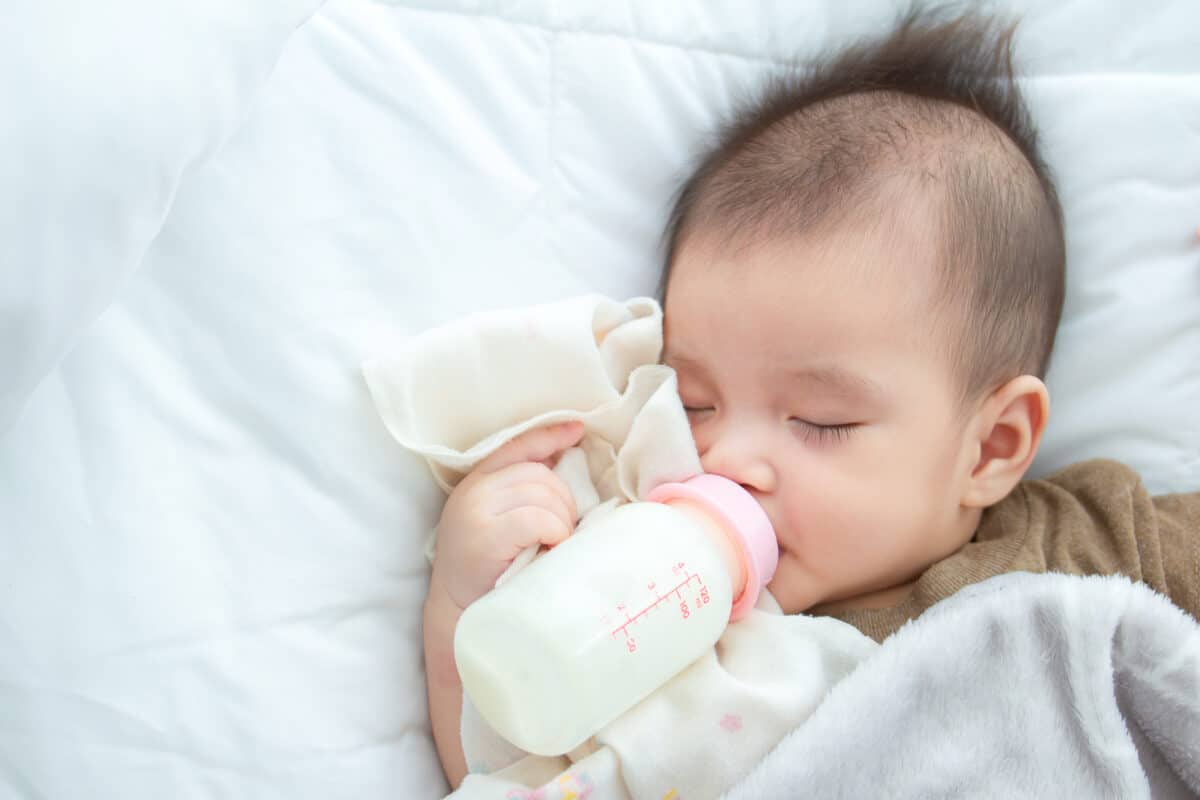

How Many Baby Bottles Do I Need?
New parents don't always know how many supplies they will need for their baby. Sometimes they buy way too much, and other times not enough. Baby bottles can be extra tricky. As a mother of twins, I sometimes felt like my kitchen was overrun with baby bottles. I was sent home from the hospital with boxes full of liquid formula for preemies all in tiny two-ounce bottles. The pediatrician encouraged me to sanitize those bottles and use them for both formula and pumped breast milk. I did that until the babies could eat more than two ounces in one feeding. When the twins graduated up, we still needed lots of bottles to keep up with all the feedings each day. I was surprised when I later had a single baby and could manage with a much more reasonable number. So just how baby bottles does the typical baby really need? The number of bottles you will need for a newborn baby varies. Let's take a deeper dive.
Key Points
- If you breastfeed, you'll need about half as many bottles as you would if you're bottle-feeding.
- As your baby grows, they'll eat more per feeding. This will cut down on the number of bottles you'll need.
- If your baby is a preemie, you'll possibly need more bottles. Since they're undersized, they need more food to help them catch up to their peers.

©Africa Studio/Shutterstock.com
How Many Baby Bottles Do Newborns Need?
How many bottles you need depends on whether you are mostly bottle-feeding or breastfeeding and how often your baby is eating. You should also consider how frequently you will be washing and sanitizing your bottles. Also think about whether you plan to prepare multiple bottles ahead of time to store in the refrigerator.
Mostly Bottle-Fed Babies
A good number of bottles to keep on hand for bottle-fed newborns is eight to 10. This is the same whether using formula or pumped breast milk. Newborns who eat every three to four hours around the clock will use at least six to eight bottles daily. Keeping eight to 10 bottles gives you a cushion, in case they need an extra feeding or two. It is also helpful if you have a tough day and don’t manage to get the bottles washed before starting the next morning.
Mostly Breastfed Babies
Breastfed babies, of course, can take many of their feedings directly from their mother’s breast. This eliminates the need for as many bottles. Four or five bottles should be plenty to get by on a day-to-day basis. However, if you will be away from your baby for an extended period and pumping milk, you will need more. Consider getting at least a couple more bottles so that your baby's caregiver has plenty on hand.
How Many Bottles Do Older Babies Need?
By the time your baby reaches about four months of age, they will likely be sleeping through the night. They will also be eating more at each feeding. You will likely need to switch to eight-ounce or nine-ounce bottles by this time. Your baby will have even fewer daily bottles as they transition to solid foods. However, if your baby goes to daycare, you may be required to prepare several bottles each day. This is true whether you are using formula or pumping milk.
Depending on your situation and your baby’s feeding habits, you may get by with just three to five bottles daily. However, you may still need or prefer to have more bottles than that. This applies especially if you only plan on washing bottles once per day.
How Many Bottles Do Preemies Need?
If your baby is a preemie, you might need more bottles than you would for a typical newborn. Preemies are often on a strict feeding schedule with no more than three hours between bottles all around the clock. Their stomachs are so tiny they may need to feed even more often than that. It is extremely important to follow your doctor’s directions when feeding a preemie. They will benefit from every calorie they can consume.
Of course, all those feedings and the other extra care that a preemie may need can be exhausting. Based on personal experience as a mom of preemies, I would suggest at least 12 to 16 of two-ounce bottles. You will want to prepare several at a time when you are awake enough to focus on filling them properly.
You may be sent home with a stash of liquid formula in two-ounce bottles. These are just fine until your preemie is eating more at each feeding. Make sure you clean and sanitize the bottles before reusing them. Also, buy plenty of small nipples that fit. They are inexpensive, and you will be glad to always have clean ones ready to go.
What Size Bottle Does My Baby Need?

©SizeSquares/Shutterstock.com
Preemies may be able to get by with two-ounce bottles for a short time before graduating up. Most newborns will be fine with four-ounce or five-ounce bottles for a while. Depending on how quickly your baby’s appetite grows, they may be able to use these smaller bottles for the first four months or so. You will know when to move up to the larger eight-ounce or nine-ounce bottles. Start shopping as your baby begins to consume most of what the smaller bottles will hold in a feeding.
What Type of Baby Bottles Should I Buy
There are many types of baby bottles on the market today. The type you choose is largely a matter of personal preference combined with what you can afford. Here are a few considerations regarding the type of baby bottles you might choose.
Plastic Bottles
Plastic baby bottles were the most popular choice for decades. They are still preferred by many parents thanks to their low cost and resistance to breakage. However, some plastic bottles have fallen out of favor due to concerns about the chemicals used in manufacturing. Make sure any plastic bottles you buy are BPA-free and from a reputable manufacturer. Of all the types of bottles, plastic is probably the least expensive up front.
Glass Bottles
Glass baby bottles are a great choice for parents who prefer a nice, clear bottle. They make it easy to see how much the baby has taken. Parents don’t have to be concerned about unwanted chemicals leaching into their baby’s milk or formula. However, glass, by its very nature, is breakable. Some glass baby bottles come with shatter-resistant covers that make them a safer option. Glass bottles are comparable in price to plastic, but may be a bit higher depending on brands and features.
Hybrid Glass and Plastic Bottles
Some newer baby bottles are hybrids with glass on the inside and plastic on the outside. These hybrid baby bottles have the durability and resistance to breakage you would expect from a high-quality plastic bottle. They also have the purity of glass bottles on the inside, where the bottle touches your baby’s food. These hybrid bottles cost a bit more than plastic or glass, at least at the lower end of the scale.
Stainless Steel Bottles
Just as so many people have begun to opt for stainless steel cups and water bottles for themselves, many parents are now choosing stainless steel bottles for their babies. These bottles are significantly more expensive than plastic or glass, but their durability is fantastic. They could easily be used for multiple babies in a family, handed down to friends, or even resold. They hold their value remarkably well and that could be something to consider when deciding whether to invest upfront. One drawback is that they are not see-through. It may be difficult to tell how much your baby has consumed or how much is left in the bottle.
Silicone Baby Bottles
Silicone baby bottles are durable, see-through, and offer a purity comparable with glass. They are available over a wide range of price points, depending on brands. These bottles are usually soft and a bit squishy, with a more natural feel than rigid alternatives.
Choosing the Right Nipple
In addition to your baby bottles, you will need to choose the right nipples for feeding your baby. There are a lot of choices, and they can be confusing. Should you choose silicone or latex? Low, medium, or high flow? Standard shaped or breast shaped? Does your baby need an orthodontic nipple, a vented nipple, an adjustable flow nipple?
Complicating things further is the fact that certain types of bottles only use certain types of nipples. The ones that fit the specialty bottles you have your eye on might not work for your baby at all. Obviously, you want to make the perfect choice. Unfortunately, finding the right nipple for your baby can require a lot of trial and error. It might be best to buy just one or two bottles or nipples until you figure out what works.
How Much Should I Expect to Spend?
The expense of a new baby can be daunting for many parents. There is just so much to buy. The cost of diapers alone can boggle the mind! So how many baby bottles do you ultimately need? Again, this depends on your feeding preferences, your baby’s appetite, and how often you intend to sanitize your bottles.
For newborn babies, plan to buy about eight to ten of the smaller four-ounce or five-ounce bottles at minimum. If you are on a budget, consider buying bottles that will accept a variety of nipples. These can be better than bottles that only come with one kind. You can try out different nipples instead of buying whole new bottles if you must make a change.
If you spend around $10 per bottle for 10 bottles, and purchase plenty of extra nipples, your total cost for the first four months or so should be less than $150. That’s a little less than $40 per month, assuming that the bottles you buy work well for your baby. If they do not, and you have to switch, buy just one or two bottles at a time until you find what works.
Switching to Larger Bottles
Switching an older baby to the larger eight-ounce or nine-ounce brings new expenses. By the time you make this switch, you may have a better idea what type of nipple your baby prefers. Your baby will likely use these bottles longer than they used the smaller ones. The American Academy of Pediatrics recommends discontinuing the bottle between 12 and 24 months. Therefore you may want to invest in more durable, more expensive bottles at this stage.
You don’t have to spend a lot to get decent bottles at the larger size. However, you might want to spend more to get higher quality, super durable bottles that will last. If you spend $20 per bottle for eight large bottles, and again purchase extra nipples to replace ones that wear out, your total cost over the next eight months or more should be around $200. That’s approximately $25 per month if your baby is weaned from the bottle by their first birthday.
If you are on a budget, the time to splurge on baby bottles is when your baby transitions to the larger size. They will use those at least twice as long. You have the added benefit of being able to try bottles one or two at a time during the transition period instead of buying a bunch. That way, you can really find just the right fit without too much added cost.
What Can I Do with My Old Baby Bottles?
Once your baby graduates to larger bottles or stops bottle feeding entirely, you might be left wondering what to do with all your bottles. If you're planning on having more children down the line, obviously it makes sense to keep them. But if you're finished having children, then you'll want to get rid of the bottles you no longer need.
One option is to pass them on to someone you know. Maybe a friend or relative is pregnant; by gifting them your (clean!) bottles, it can help cut the cost down for them. Another option is to donate them to a charity, like Goodwill. Keep in mind that not all charities will accept used baby bottles, even if they have been sanitized. You can also consider repurposing them in a DIY project! Ultimately, try to avoid throwing them in the trash. Our landfills are full enough already!
If you give them to another person, make sure they've been thoroughly cleaned and sanitized first.